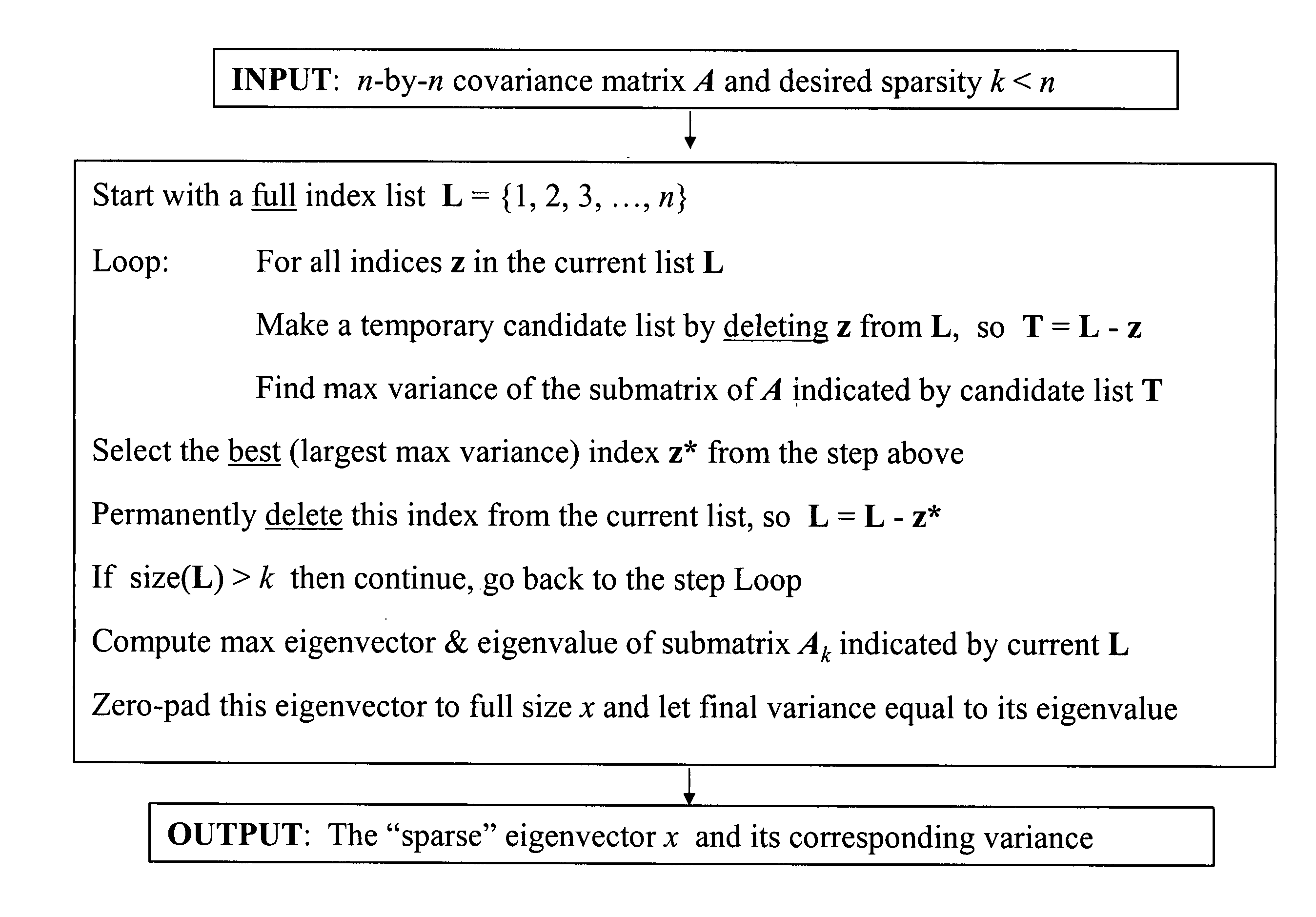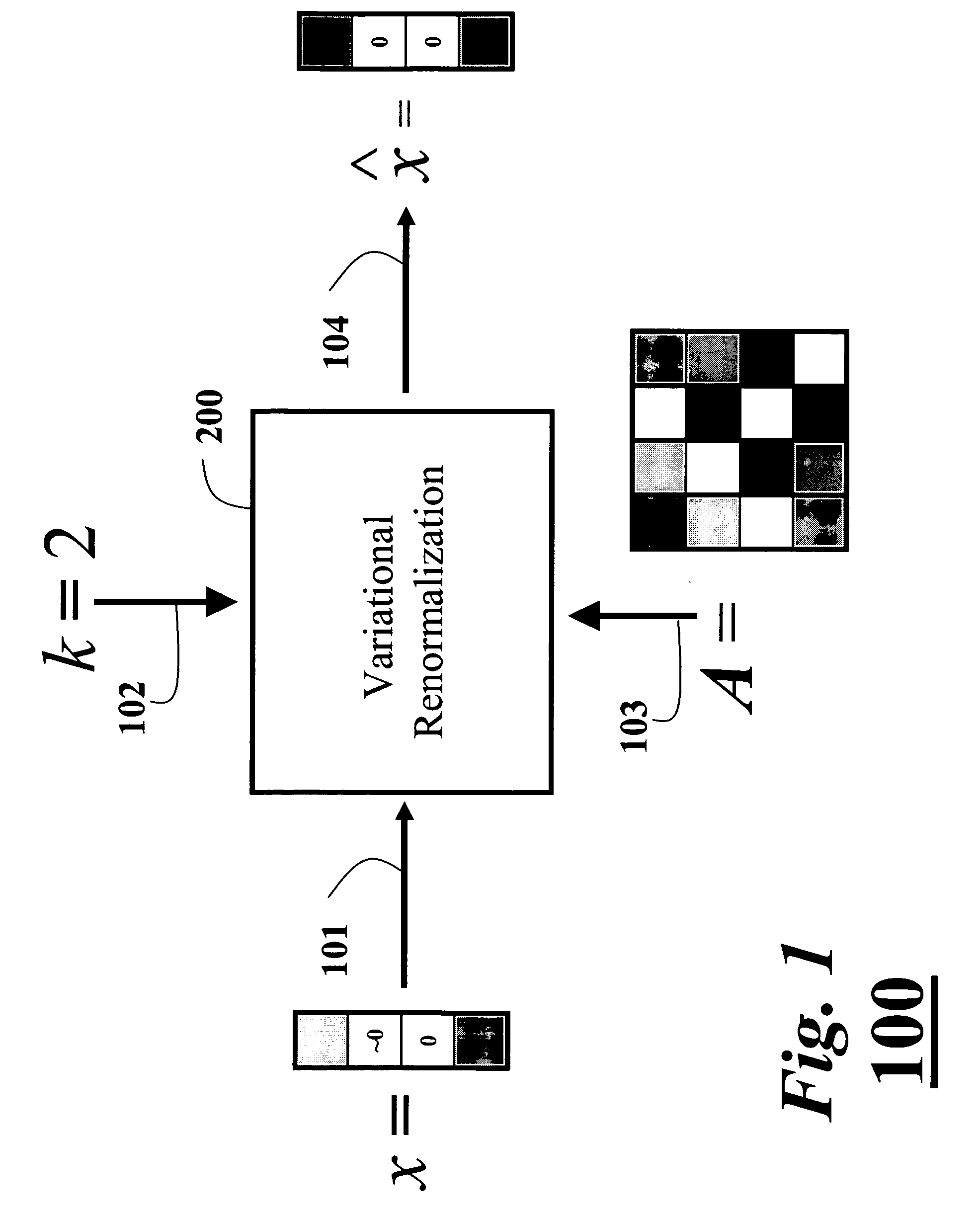Spectral method for sparse principal component analysis
a principal component and spectral method technology, applied in the field of principal component analysis, can solve the problems of inability to compute, inability to correlate principal components, and inability to solve the problem of pca using non-zero linear combinations or ‘loads', so as to improve the approximation of candidate solutions
- Summary
- Abstract
- Description
- Claims
- Application Information
AI Technical Summary
Benefits of technology
Problems solved by technology
Method used
Image
Examples
Embodiment Construction
[0025] One embodiment of our invention provides a method for performing sparse principle component analysis on data using spectral bounds. The sparse PCA can be used to find solutions to practical combinatorial optimization problems.
[0026] In contrast with the prior art, our invention uses a discrete formulation based on variational eigenvalue bounds. The method determines optimal sparse principal components using a greedy search for an approximate solution and a branch-and-bound search for an exact solution.
[0027] For example, the method can be used to optimally solve the following practical stock portfolio optimization problem. It is desired to invest in ten stocks x picked from a substantially larger pool of available stocks, such as the 500 stocks listed by the Standard & Poor's Index. An input 500×500 covariance matrix A measures covariance in risk / return performances between each pair of the 500 stocks. It is desired to find a 500-dimensional vector x of allocations, such th...
PUM
 Login to View More
Login to View More Abstract
Description
Claims
Application Information
 Login to View More
Login to View More - R&D
- Intellectual Property
- Life Sciences
- Materials
- Tech Scout
- Unparalleled Data Quality
- Higher Quality Content
- 60% Fewer Hallucinations
Browse by: Latest US Patents, China's latest patents, Technical Efficacy Thesaurus, Application Domain, Technology Topic, Popular Technical Reports.
© 2025 PatSnap. All rights reserved.Legal|Privacy policy|Modern Slavery Act Transparency Statement|Sitemap|About US| Contact US: help@patsnap.com



